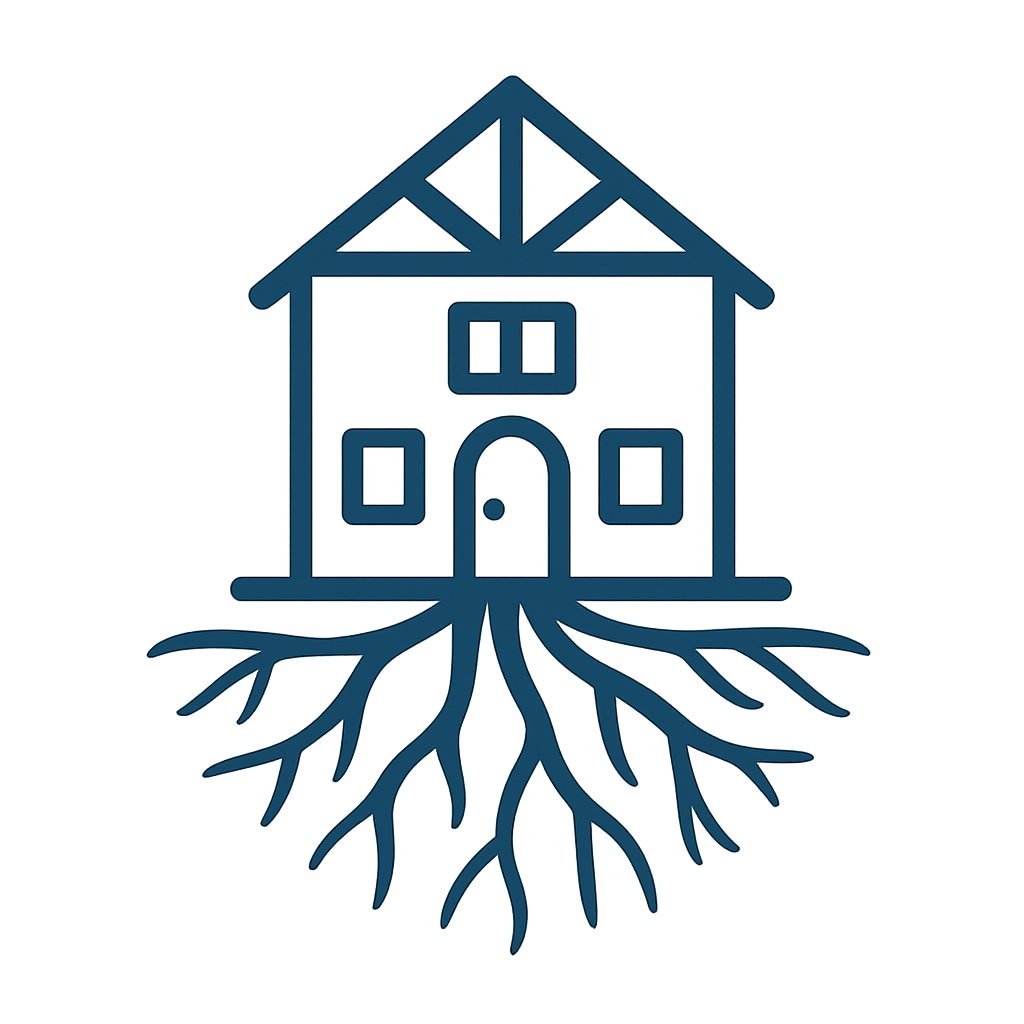The Village Blueprint
A living plan for building not just homes, but belonging.
We don’t just offer programs—we build systems.
The Village Blueprint is our foundational plan for how housing, food, care, and culture weave together into a working model of community. It’s a guide, a map, and a commitment to building what our society so often neglects: spaces that are affordable, nourishing, creative, and collectively held.
At Moonridge, we don’t treat housing, food, and culture as separate “issues” to solve—we see them as parts of the same living system. The Village Blueprint is built on the belief that resilience doesn’t come from isolated interventions. It comes from interdependence.
In conventional systems, people are siloed: housing is dealt with by one agency, food by another, mental health by a third. This fragmentation ignores how real lives work—and how real communities thrive.
We’re doing the opposite.
At Moonridge, a shared garden doesn’t just grow food—it brings neighbors together. A skillshare workshop isn’t just about learning—it transfers power, preserves tradition, and builds trust. A tiny home isn’t just shelter—it’s an anchor that allows someone to participate, contribute, and root.

Affordable Housing
Secure, sustainable, and built for belonging.
We’re developing long-term housing solutions that center dignity over disposability. Homes will be designed for essential workers, artists, caregivers, and others who are often priced out of the very communities they serve.

Shared Kitchens and Gardens
Food as care, nourishment, and connection.
We’re cultivating spaces for growing and sharing food together—community gardens, meal hubs, and cooking spaces that bring people to the table and strengthen the fabric of daily life.

Skillshares & Storykeeping
Hands-on knowledge passed heart to heart.
We preserve culture and strengthen intergenerational ties through workshops, mentorship, and seasonal gatherings. Every tradition, trade, and story becomes part of the commons we’re building.
Why It Works: Systems Principles in Practice
We draw from principles of regenerative design, mutual aid, and communal care, which show that:
- Nested systems are stronger systems.
When housing, food, and culture are integrated, each one supports the other. If one system is stressed, the others absorb the shock. - Social capital is real capital.
When people know and trust each other—through shared meals, workdays, and stories—they build a resilient safety net no institution can replicate. - Dignity-based infrastructure prevents burnout.
Our residents aren’t expected to “bootstrap” their way through crisis. Instead, the environment itself is designed to meet needs before they become emergencies.
A Living Example
Imagine:
- A caregiver lives in a Moonridge home. She shares meals from the community kitchen.
- Her neighbor, a veteran and carpenter, helps repair her porch.
- In return, she offers herbal knowledge at a weekend workshop.
- The workshop raises funds for more garden beds, which feed both their families.
That’s the system.
Circular. Relational. Rooted in reciprocity, not extraction.
A Blueprint That Builds Itself
Each part of Moonridge strengthens the others:
- Housing offers stability → Stability enables participation
- Food spaces create trust → Trust fuels skill exchange
- Shared knowledge reduces dependency → Which reinforces dignity and agency
- And the whole ecosystem becomes self-sustaining over time
This isn’t utopia. It’s infrastructure for human life—and it works because people have always done it this way, when allowed to.
Every home, every harvest, every story begins with the hands that build it. Let yours be part of the foundation.
Be a Village Builder
